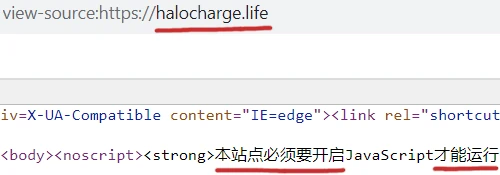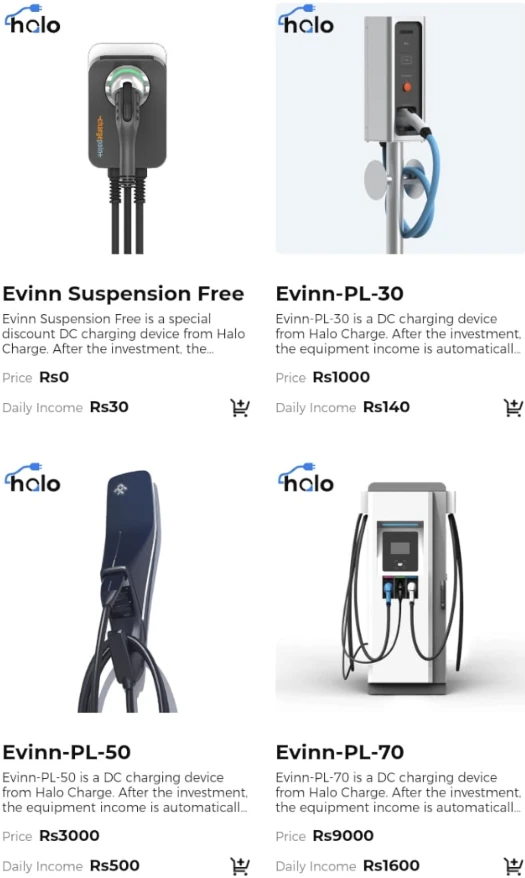Halo Charge Review: EV recharging “click a button” app Ponzi
Halo Charge fails to provide ownership or executive information on its website.
Halo Charge’s website domain (“halocharge.life”), was registered with bogus information on September 4th, 2023.
If we look at Halo Charge’s website source-code we find Chinese:

This strongly suggests whoever is running Halo Charge has ties to China.
As always, if an MLM company is not openly upfront about who is running or owns it, think long and hard about joining and/or handing over any money.
Halo Charge’s Products
Halo Charge has no retailable products or services.
Affiliates are only able to market Halo Charge affiliate membership itself.
Halo Charge’s Compensation Plan
Halo Charge affiliates invest Pakistani Rupees (Rs.).
This is done on the promise of advertised returns:
- Evinn-PL-30 – invest Rs. 1000 and receive Rs. 140 a day
- Evinn-PL-50 – invest Rs. 3000 and receive Rs.500 a day
- Evinn-PL-70 – invest Rs. 9000 and receive Rs. 1600 a day
- Evinn-PL-90 – invest Rs. 20,000 and receive Rs. 3850 a day
- Evinn-PL-122 – invest Rs. 50,000 and receive Rs. 10,400 a day
- Terra CA 60 – invest Rs. 100,000 and receive Rs. 22,700 a day
- Terra CA 90 – invest Rs. 200,000 and receive Rs. 50,000 a day
- Terra CA 122 – invest Rs. 300,000 and receive Rs. 83,000 a day
- Terra CA 220 – invest Rs. 500,000 and receive Rs. 200,000 a day
The MLM side of Halo Charge pays on recruitment of affiliates investors down three levels of recruitment (unilevel):

- level 1 (personally recruited affiliates) – 20%
- level 2 – 5%
- level 3 – 1%
Joining Halo Charge
Halo Charge affiliate membership is free.
Full participation in the attached income opportunity requires a minimum Rs. 1000 investment.
Halo Charge Conclusion
Halo Charge is yet another “click a button” Ponzi scheme, this time targeting Pakistan.
Halo Charge’s “click a button” Ponzi ruse is electric vehicle (EV) charging.

Broken down, Halo Charge’s ruse sees affiliates log in and click a button to invest in EV charging stations.

Halo Charge represents revenue is then generated by customers using the EV charging stations, a percentage of which is shared with investors.
This is of course nonsense. There is no EV charging stations or customers.
All Halo Charge is doing is recycling newly invested funds to pay earlier investors.
Halo Charge is part of a group of “click a button” app Ponzis that have emerged since late 2021.
Although not the exact same ruse, examples of already collapsed “click a button” app Ponzis using a similar ruse include Gollong Solar, SunSolar and L.NE.
Including Ant Halo Charge, BehindMLM has thus far documented eighty-eight “click a button” app Ponzis. Most of them last a few weeks to a few months before collapsing.
“Click a button” app Ponzis disappear by disabling both their websites and app. This tends to happen without notice, leaving the majority of investors with a loss (inevitable Ponzi math).
The same group of Chinese scammers are believed to be behind the “click a button” app Ponzi plague.

